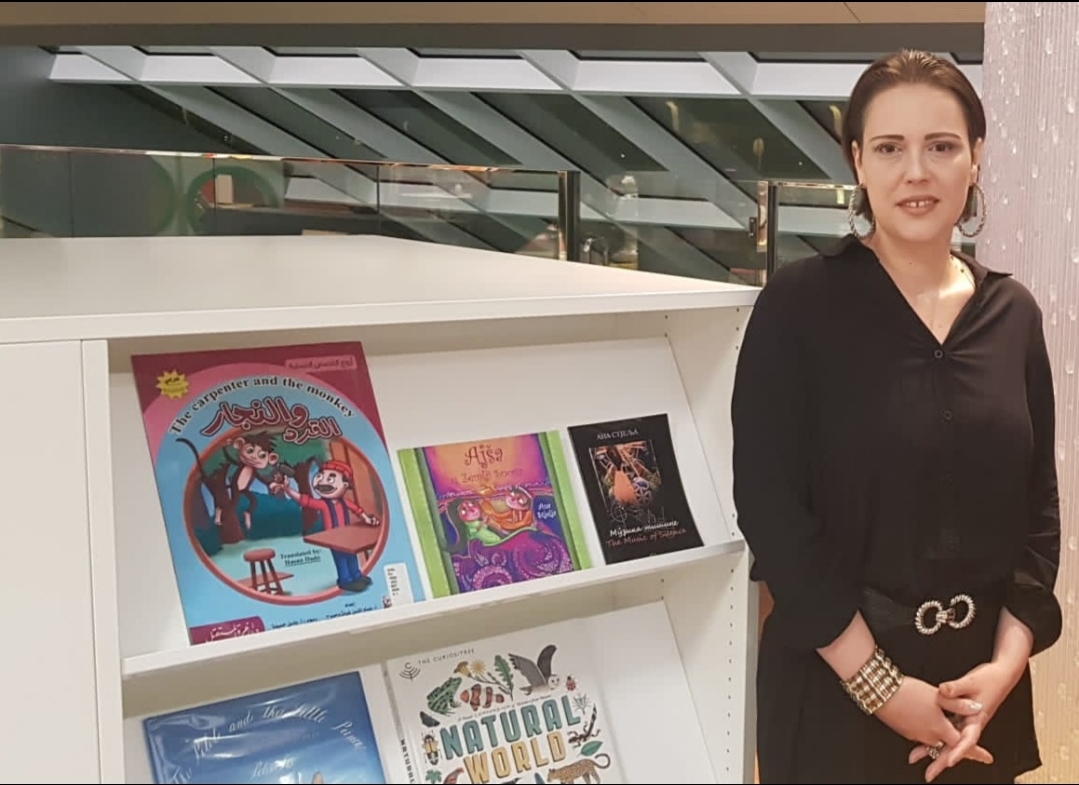Defying gender stereotypes through fairy tales in Serbia
Date:

Not every fairy tale has to begin with “Once upon a time” and end with “…happily ever after.” Serbian author Ana Stjelja challenged the classic fairy-tale narrative by rewriting one of the stories from the “One Thousand and One Nights” collection. The 40-year-old Serbian writer and literary translator studied Turkish language and literature at Belgrade University and is now living in Oman. She writes poetry, short stories, aphorisms, essays and travel memoirs, and translates from English, Spanish, Turkish and Portuguese. Her story was part of the UN Women Europe and Central Asia (ECA) initiative "Awake not sleeping: reimagining fairy tales for a new generation", which had 100+ feminist writers revisit fairy tales, instill their perspectives on women’s rights and empower younger generations to become gender equality champions.
How did you get involved with the fairy tale project?
I attended a creative writing workshop organized by UN Women ECA, which encouraged, empowered and inspired me to start looking at things from a different perspective. It helped me shape my creative idea and rehash an existing fairy tale in a new way. I wrote “Aisha in Dreamland” with the inspiration to combine traditional and modern elements in one story. I believed in it from the beginning, although my friends found it a bit strange, or at least unusual. I wanted my main character to be presented not as a beautiful princess who falls in love with her prince and lives happily ever after, but as a curious girl with her own desires and vivid imagination, who is ready for adventures in the great unexplored world around her. The idea is to motivate girls to read books, get an education, be brave, creative and curious, and to be the heroines of their own lives rather than “extras” with secondary roles.
What was the biggest challenge for you while developing this fairy tale?
The biggest challenge was to write from the position of another culture, and still send a universal message. I did not want it to look like a copy of one of the stories from One Thousand and One Nights, but to be educational and offer children a new perspective on life and growing up. It makes me happy when I hear that a girl from Egypt or Serbia liked the story just as much as a boy from England or China. It means that the story has achieved success at a universal level, that it is understandable and accepted in all meridians. I must emphasize that adults also like the story, as it awakens the curious child that is hidden within us all.
How is your fairy tale breaking gender stereotypes?
The first stereotype is that the genie from the lamp must be a man. Besides achieving the element of surprise, which is important for children, I wanted to show that a woman genie can be of great help to a girl, because she understands her. Another stereotype it challenges is that boys are the ones who go on big adventures, ask questions and are eager to learn, while girls are secondary characters there to accompany them, or make them look good. My heroine, Aisha, is the protagonist who takes the initiative, goes on an adventure, and asks questions to learn about the world and improve herself. I intentionally cast Aladdin as a boy who supports her on her journey, thus avoiding boy-girl love as the only possible trope.
How important are fairy tales like these for girls and boys today?
I think they are very important. This is a complex time full of challenges for raising children. We may not even be aware of how certain content can affect children and later influence their growth, maturation and life. These fairy tales encourage children to develop creative thinking, express their curiosity and learn something new. Reading such fairy tales has a positive effect on the psychological development of children and helps them to see life from different perspectives, expand their horizons, and get to know others.
Has Aisha had success abroad?
My fairy tale was first published in English as part of the collection by UN Women ECA. It was then translated into Chinese and published electronically. Thanks to the largest publishing house in Egypt – the General Egyptian Book Organization (GEBO) – it was also published in Arabic and promoted at different book fairs. It attracted special attention at last year’s Frankfurt Book Fair, and was covered by leading Egyptian media, as well as media in Oman, because the idea itself arose while I was living in Muscat, Oman. In March 2022, my fairy tale was also presented at a literary festival in Mexico celebrating Hans Christian Andersen’s birthday, through an audio reading of a sequence in English.
Do you have plans to continue reconstructing traditional fairy tales?
I am already preparing press material for a new fairy tale inspired by Serbian writer and women’s rights activist Jelena J. Dimitrijević, which I created as part of a creative workshop organized by UN Women ECA. And I will certainly continue writing fairy tales that aim to change established norms and patterns in children’s literature.